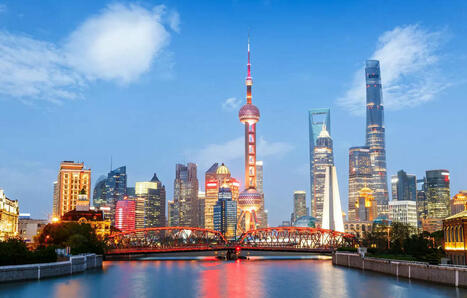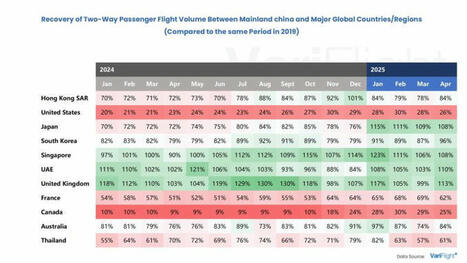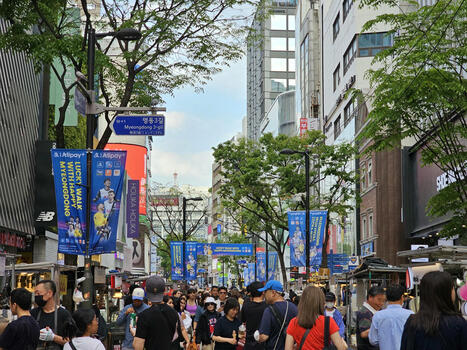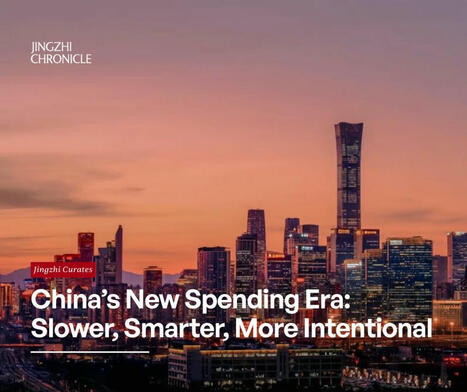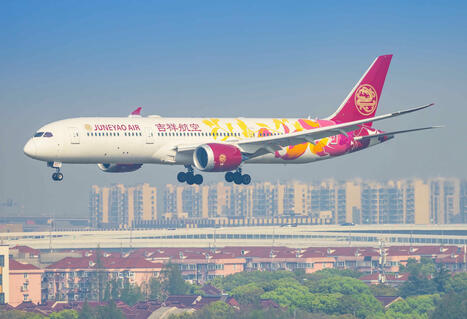 Your new post is loading...
 Your new post is loading...

|
Scooped by
Trevor Lee @ TravConsult
May 15, 12:19 AM
|
Much has been written about China’s “consumption downgrade” and “deflationary pressures.” It is true that China hasn’t experienced significant inflation like in the West – average sales prices have remained flat, and prices in some sub-categories have even declined.

|
Scooped by
Trevor Lee @ TravConsult
May 11, 9:35 PM
|
"If you don't understand how travelers from different Asian markets use short-video apps, it's impossible to market to them effectively," Bowerman explained. The shift highlights the crucial need for personalization, with destinations and platforms being chosen that connect with travelers through...

|
Scooped by
Trevor Lee @ TravConsult
May 11, 9:31 PM
|
More young Chinese travelers opt for chills over thrills Asia News Network (ANN) is the leading regional alliance of news titles striving to bring the region closer, through an active sharing of editorial content on happenings in the region.

|
Scooped by
Trevor Lee @ TravConsult
May 11, 9:20 PM
|
While retail sales grew during the five-day Labor Day break, cautious spending patterns reveal lingering economic concerns as China navigates US tariffs.

|
Scooped by
Trevor Lee @ TravConsult
May 11, 9:13 PM
|
Chinese Travellers Spending: Chinese travelers spent 180.27 billion yuan during the May Day holiday, marking an 8% increase from last year, signaling a potential boost in consumer confidence. The tourism ministry recorded 314 million domestic trips, a 6.5% rise, though per capita spending remained below pre-pandemic levels. While restaurant spending increased, cinema ticket sales experienced a significant drop compared to the previous year.

|
Scooped by
Trevor Lee @ TravConsult
May 11, 8:00 PM
|
Chinese tourists prioritize unique experiences over shopping in travel shift The travel formula of Chinese tourists is breaking down. For a long time

|
Scooped by
Trevor Lee @ TravConsult
May 11, 7:49 PM
|
BEIJING, May 7 (Xinhua) -- Standing beside the emerald waters of the Dulong River in southwest China

|
Scooped by
Trevor Lee @ TravConsult
May 9, 6:18 AM
|
✈️ 𝗖𝗵𝗶𝗻𝗮–𝗚𝗹𝗼𝗯𝗮𝗹 𝗔𝗶𝗿 𝗧𝗿𝗮𝘃𝗲𝗹 𝗥𝗲𝗰𝗼𝘃𝗲𝗿𝘆 | 𝗧𝗿𝗲𝗻𝗱𝘀 𝗮𝘀 𝗼𝗳 𝗔𝗽𝗿𝗶𝗹 𝟮𝟬𝟮𝟱
According to VariFlight data, the recovery of two-way international flights between Mainland China and major global regions continues to diverge. Here are the updated insights reflecting both April 2025 data and YTD trends:
📌𝗧𝗼𝗽 𝗣𝗲𝗿𝗳𝗼𝗿𝗺𝗶𝗻𝗴 𝗠𝗮𝗿𝗸𝗲𝘁𝘀 (𝗘𝘅𝗰𝗲𝗲𝗱𝗶𝗻𝗴 𝟮𝟬𝟭𝟵 𝗹𝗲𝘃𝗲𝗹𝘀):
* 🇬🇧 United Kingdom: Surged to 113% in April, marking it as the top-performing European market
* 🇦🇪 UAE: Hit 110% in April, showing sustained strong recovery
* 🇸🇬 Singapore: Stable performance above 100%, April at 108%
* 🇯🇵 Japan: Strong demand maintained, April also at 108%
📌 𝗡𝗲𝗮𝗿-𝗥𝗲𝗰𝗼𝘃𝗲𝗿𝘆 𝗠𝗮𝗿𝗸𝗲𝘁𝘀:
* 🇰🇷 South Korea: April recovery reached 96%, up steadily since January
* 🇭🇰 Hong Kong SAR: Bounced back to 84% in April after early-year dip
📌 𝗩𝗼𝗹𝗮𝘁𝗶𝗹𝗲 𝗠𝗮𝗿𝗸𝗲𝘁:
* 🇹🇭 Thailand: Declined in Q1 but rebounded slightly to 61% in April
📌 𝗟𝗮𝗴𝗴𝗶𝗻𝗴 𝗠𝗮𝗿𝗸𝗲𝘁𝘀:
* 🇺🇸 United States: April at 26%, remaining stagnant
* 🇨🇦 Canada: April recovery at 25%, little change
📈 𝗞𝗲𝘆 𝗣𝗼𝗶𝗻𝘁𝘀:
* The UK and UAE have surpassed pre-pandemic levels and are now global leaders in flight recovery to/from China
* Asian markets continue leading the recovery curve
* North American routes remain under pressure with no clear rebound yet
#AirTravelRecovery #ChinaAviation #InternationalFlights #TravelTrends2025 #AviationData

|
Scooped by
Trevor Lee @ TravConsult
May 9, 1:50 AM
|
Swiss performance footwear brand ON opened its first China flagship store last month. While the brand followed the standard playbook of entering via e-commerce platforms, building its online presence, and activating with pop-ups, it rewrote the usual script for its first flagship.

|
Scooped by
Trevor Lee @ TravConsult
May 6, 11:28 PM
|
The Macao Government Tourism Office (MGTO) reported that Macau’s average hotel occupancy rate during the May Day holiday period was

|
Scooped by
Trevor Lee @ TravConsult
May 5, 8:16 AM
|
Brands struggle to reach Chinese consumers through traditional apps and websites. WeChat Mini Programs now serve over 450 million daily active users in China's biggest social platform.

|
Scooped by
Trevor Lee @ TravConsult
May 2, 8:48 PM
|
Three of China’s largest airlines announced their quarter one (Q1) 2025 results. #FlightFriday compares Air China, China Eastern Airlines, and China Southern Airlines' domestic flights versus international.

|
Scooped by
Trevor Lee @ TravConsult
May 1, 12:52 AM
|
Is China the last great hope for growth in the global wine industry?
The wine industry is reportedly in something of a funk.
Declining consumption here, oversupply there.
Many yearn for solutions from times gone by, which is my excuse to quote Bonnie Tyler - we're holding out for a hero.
Meanwhile in China, younger drinkers are taking things into their own hands and a number of forces are converging to drive change, and most importantly growth.
1. A shift to everyday consumption
Gen Z and Millennial Chinese consumers are moving away from the gifting/status model that fueled earlier wine booms.
Instead, they're integrating wine into regular social gatherings, weeknight meals, and casual meet-ups.
Wine is becoming less about displaying wealth and more about lifestyle and personal enjoyment.
2. Digital first discovery
Young Chinese wine enthusiasts are discovering new wines primarily through social platforms like RED (Xiaohongshu) and WeChat.
Live streamed tastings and virtual masterclasses have exploded in popularity.
3. Style preferences are evolving
While big banging reds traditionally dominated imports, younger consumers are showing broader palate preferences with a growing interest in lighter bodied reds from cooler climate regions.
Demand is surging for rosé and sparkling wines (particularly among female consumers) as well as aromatic white wines like Riesling and Gewürztraminer.
4. The home grown effect
Younger drinkers are now more comfortable with "made in China" and so there is an openness to Chinese made wine, particularly from Ningxia and Shandong regions.
5. Experience centered consumption
Wine bars featuring flights, tasting experiences, and food pairings are proliferating across tier-one and tier-two cities.
Young consumers prioritise the story and experience surrounding wine rather than just label recognition.
As a result, wine tourism (both domestic and international) is growing exponentially among affluent young professionals.
6. Health is the new wealth
The wellness conscious younger generation are showing a growing interest in organic and biodynamic wines.
As a result, sustainability credentials are increasingly important, with packaging innovation and environmental commitment becoming differentiators in a crowded market.
6. Chinese wine geeks
Knowledge hungry consumers are driving a thirst for wine education.
Refreshingly, young professionals increasingly view wine knowledge as both a personal interest and career advantage.
The implications for international wine producers in all of this are significant.
Success in today's Chinese market requires an authentic connection with consumers who are increasingly sophisticated and focused on experience.
The dragon is stirring.
Have we found our hero?
--------------------------------------------------
I'm Iain Langridge 毅安 and I use my experience in China to launch, grow, and manage premium consumer brands.
Follow or DM me to find out more.
|

|
Scooped by
Trevor Lee @ TravConsult
May 14, 12:06 AM
|
Hotel booking volume doubles

|
Scooped by
Trevor Lee @ TravConsult
May 11, 9:32 PM
|
Major tourism platforms in China have integrated AI technologies, while various provinces and cities have launched AI tourism service platforms with unique features.

|
Scooped by
Trevor Lee @ TravConsult
May 11, 9:20 PM
|
By Hasan MuhammadEditor's Note: The writer is a freelance columnist on international affairs based in Karachi, Pakistan. The article reflects the author's opinions and not necessarily the views of China Economic Net.At a time when much of the world remains trapped in the doldrums of economic...

|
Scooped by
Trevor Lee @ TravConsult
May 11, 9:17 PM
|
The "new reality" of China's consumer market is characterized by single-digit consumption growth. Our latest research shows three key trends shaping the market.

|
Scooped by
Trevor Lee @ TravConsult
May 11, 9:12 PM
|
Data from Alipay and other Alipay+ partner payment apps indicates a notable increase in both outbound and inbound tourism spending in China

|
Scooped by
Trevor Lee @ TravConsult
May 11, 7:50 PM
|
As China's tourism industry further embraces technology, robot-assisted hikes and AI-guided sightseeing tours are among a number of travel experiences that have become increasingly common across the country.Over the recent May Day holiday – one of China's

|
Scooped by
Trevor Lee @ TravConsult
May 9, 10:05 PM
|
Alibaba and Xiaohongshu have just taken a major step toward tighter integration between content and commerce.
The new partnership enables merchants to embed product links from their Taobao and Tmall stores directly into Xiaohongshu posts. When users tap those links, they’re redirected to the Taobao app to complete their purchase—creating a smooth, app-to-app path from discovery to transaction.
This is a smart move for both sides. Alibaba gets access to one of China’s most influential content ecosystems. Xiaohongshu enhances its creator and merchant tools, while maintaining focus on community and inspiration.
It also comes at an interesting time—Xiaohongshu has been steadily rolling out its own native e-commerce capabilities. But this collaboration shows that interoperability still matters. The goal is to give users and merchants more options, not fewer.
For brands, it means a more direct line from top-funnel content to bottom-funnel conversion. One of the notable features under the new partnership is that there are joint merchant accounts and performance dashboards—so merchants can track the journey from Xiaohongshu content to their stores. Being able to attribute specific completed orders to specific XHS campaigns is a massive step to help brands optimize ad spend.
For users, this partnership creates a more seamless way to act on Xiaohongshu inspiration.
And for China’s e-commerce industry, another sign that it’s becoming more integrated—and more user-centric.

|
Scooped by
Trevor Lee @ TravConsult
May 9, 1:53 AM
|
China’s consumer recovery isn’t loud—but it’s layered.
McKinsey & Company’s latest 2025 Chinese Consumer Update shows that the era of breakneck spending may be behind us, but beneath the surface, meaningful growth is still taking shape. Today’s consumers aren’t scaling back—they’re becoming more selective, value-conscious, and emotionally driven.
What does this mean for brands?
💭 Confidence is stabilizing, but intent is more deliberate.
💭 Personal fulfillment now drives discretionary spending—from wellness and travel to culture and education.
💭 Heritage and spectacle are no longer enough—value must feel personal, immersive, and aligned with identity.
This recalibration closely mirrors the shift toward jingzhi (精致) consumption—defined by intentionality, emotional depth, and intrinsic reward. The experience economy isn’t fading; it’s evolving. And relevance is no longer assumed—it’s earned.
Growth may be slower, but it’s more strategic—and brands who localize with care, purpose, and cultural fluency will win in this new reality.
Read the full analysis on Jingzhi Chronicle.
#JingzhiChronicle #ChinaConsumerTrends #McKinsey #LuxuryStrategy #JingzhiConsumption #EmotionalEconomy #ExperienceRetail #ChinaInsights #LuxuryMarketing #GenZChina #RetailInnovation #CulturalRelevance #JingzhiCurates #JingzhiEconomy #NeoLuxury #Jingzhi
Photo: Chen ZY on Unsplash

|
Scooped by
Trevor Lee @ TravConsult
May 7, 8:29 PM
|
All four non-state-owned airlines turned a profit, while China Express stood out with a 232% surge in net income.

|
Scooped by
Trevor Lee @ TravConsult
May 6, 10:40 PM
|
Despite economic headwinds, Chinese travelers will spend nearly 19% more on mainland trips than last year, with international travel finally set to surpass pre-pandemic levels this year.

|
Scooped by
Trevor Lee @ TravConsult
May 5, 6:43 AM
|
🛍️ While China’s domestic luxury spending took a 20% hit last year, the daigou trade actually grew by 5% in 2024. Savvy shoppers are increasingly using these personal shoppers abroad to score better deals and hard-to-find items that aren’t available in local boutiques.
🌏 Thanks to the weak yen, Chinese tourists are spending 120% more on luxury goods in Japan compared to pre-pandemic levels. Meanwhile, Hainan’s duty-free shops saw sales plummet by nearly a third as shoppers looked elsewhere.
⚔️ Luxury houses like LVMH are cracking down on daigou resellers to protect their pricing power, while Chinese authorities impose heavy fines (up to RMB 2 million) for tax evasion. But daigou sellers keep adapting - livestreaming their overseas shopping trips, or even pioneering “reverse daigou” to bring mainland Chinese goods into Hong Kong.
💎 For many Chinese consumers, their go-to daigou isn’t just a seller - they’re a personal shopping concierge. These relationships offer 20-30% savings on luxury goods and access to exclusive items like Hermès quota bags.
🔍 Want to understand how daigou is reshaping China’s luxury landscape? Read more here: https://lnkd.in/ehKe_C2
#LuxuryMarket #RetailTrends #Luxuryshopping #ChinaConsumer #Daigou

|
Scooped by
Trevor Lee @ TravConsult
May 1, 1:13 AM
|
Germany has taken over Australia as the second largest health foods exporter to China last year, trailing behind only the US.
|



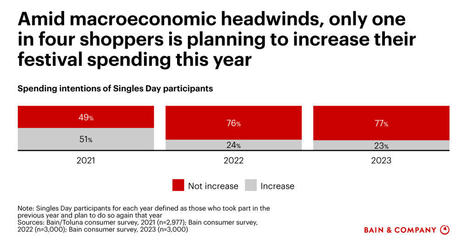


 Your new post is loading...
Your new post is loading...




